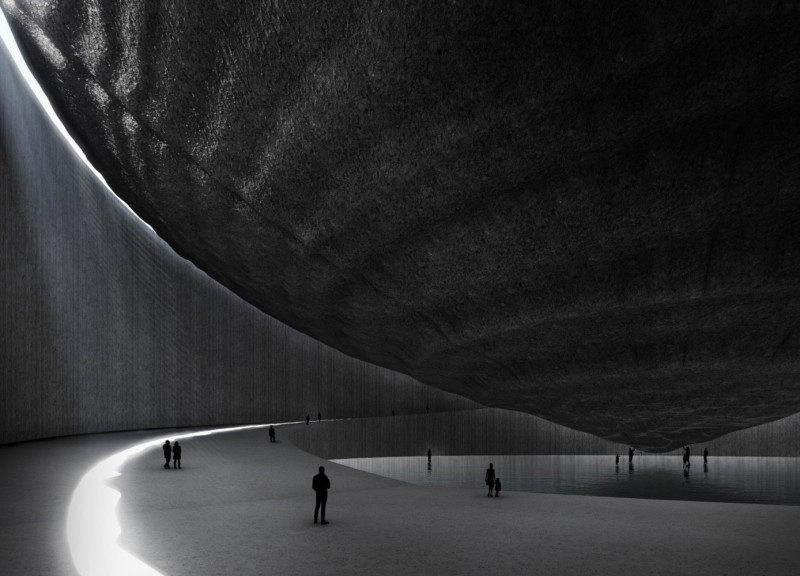5 key facts about this project
At its core, the project fulfills a social function, aiming to provide a communal platform for various activities. Its layout encourages interaction and engagement among users, promoting a sense of community within the space. The design emphasizes flexibility, allowing for adaptable use that accommodates diverse events and gatherings. This multifunctionality is evident in the open-plan design, which fosters a dynamic environment capable of evolving with the needs of its occupants.
An analysis of the project's design reveals several key architectural elements. The facade is characterized by a harmonious blend of materials, including locally sourced stone, glass, and timber. This materiality not only contributes to the aesthetic appeal but also ensures sustainability and durability. The stone provides a robust foundation, while the glass elements create transparency, allowing natural light to permeate the interior, thereby reducing the reliance on artificial lighting. The timber features introduce warmth to the design, enhancing the overall sensory experience within the space.
The roofline of the building is another noteworthy aspect, featuring an undulating profile that mimics the surrounding landscape. This design choice not only serves an aesthetic purpose but also has practical implications for water drainage and natural ventilation. The integration of green roofs further exemplifies the project's commitment to environmental sustainability, promoting biodiversity while additionally enhancing insulation and reducing heat island effects.
In terms of spatial organization, the project employs a thoughtful circulation strategy. The layout guides users through a sequence of spaces that transition smoothly, encouraging exploration and interaction. An atrium serves as a central gathering point, leading to various functional areas such as meeting rooms, exhibition spaces, and recreational facilities. This centralization of activity promotes social interaction, reinforcing the building's role as a community hub.
Unique design approaches are prevalent throughout the project, particularly in the incorporation of passive design strategies. The strategic placement of windows and openings optimizes natural ventilation and daylighting, reducing energy consumption. Furthermore, the building's orientation is carefully considered to maximize views and minimize solar heat gain, demonstrating a comprehensive understanding of the local climate.
Another noteworthy design feature is the use of sustainable technologies embedded within the architecture. Renewable energy systems, such as solar panels, are discreetly integrated into the roof structure, allowing for energy generation without compromising the aesthetic integrity of the design. Water conservation strategies, including rainwater harvesting and greywater recycling, reflect a responsible approach to resource management, further minimizing the building's environmental footprint.
The continuous exterior connections with surrounding landscapes enhance the project’s relevance to its geographical context. Landscape design incorporates native plant species that require minimal irrigation, reinforcing the commitment to sustainability while providing aesthetically pleasing green spaces. Pathways that lead to adjacent parks and public transport encourage accessibility and promote alternative modes of transportation, echoing contemporary urban planning principles.
In summary, this architectural design adeptly combines functionality, sustainability, and aesthetic appeal. Each element is carefully considered to create a cohesive space that fosters community engagement while respecting the surrounding environment. The thoughtful integration of materials, unique spatial organization, and innovative design approaches contribute to a project that stands as an example of modern architecture in harmony with its context. To delve deeper into the intricacies of this remarkable project, readers are encouraged to explore the architectural plans, sections, designs, and ideas associated with this innovative architectural endeavor.























